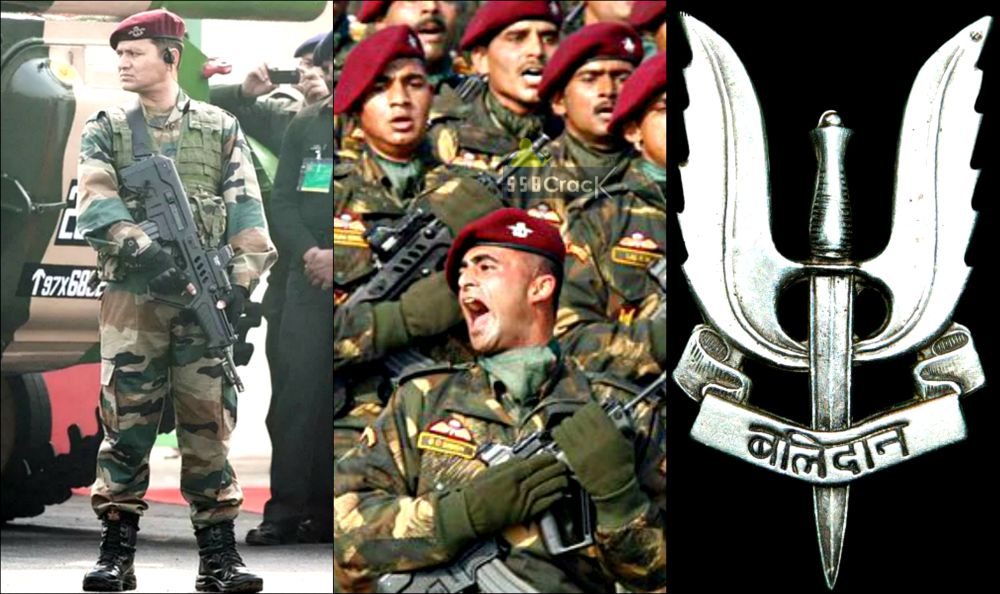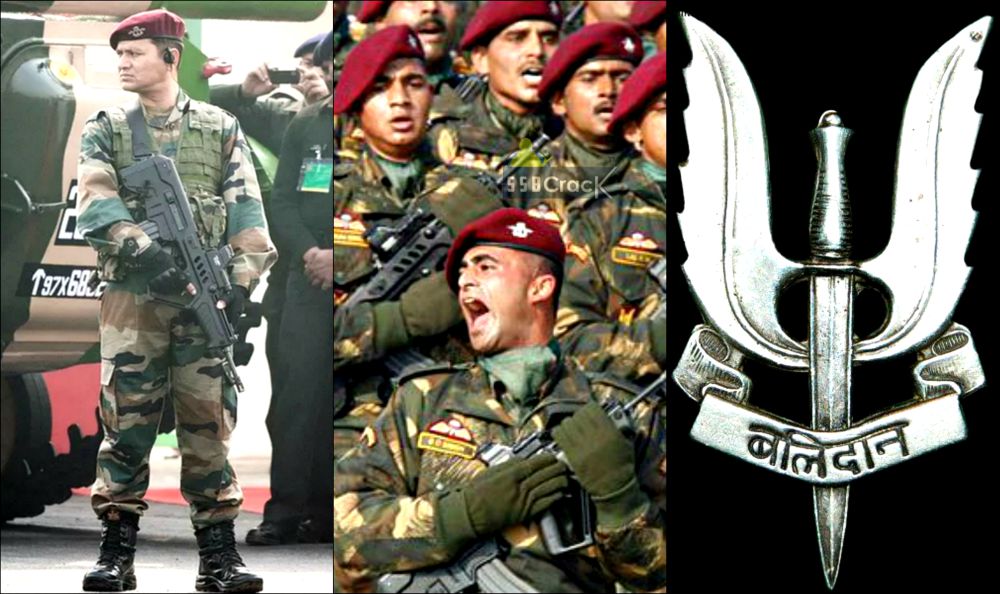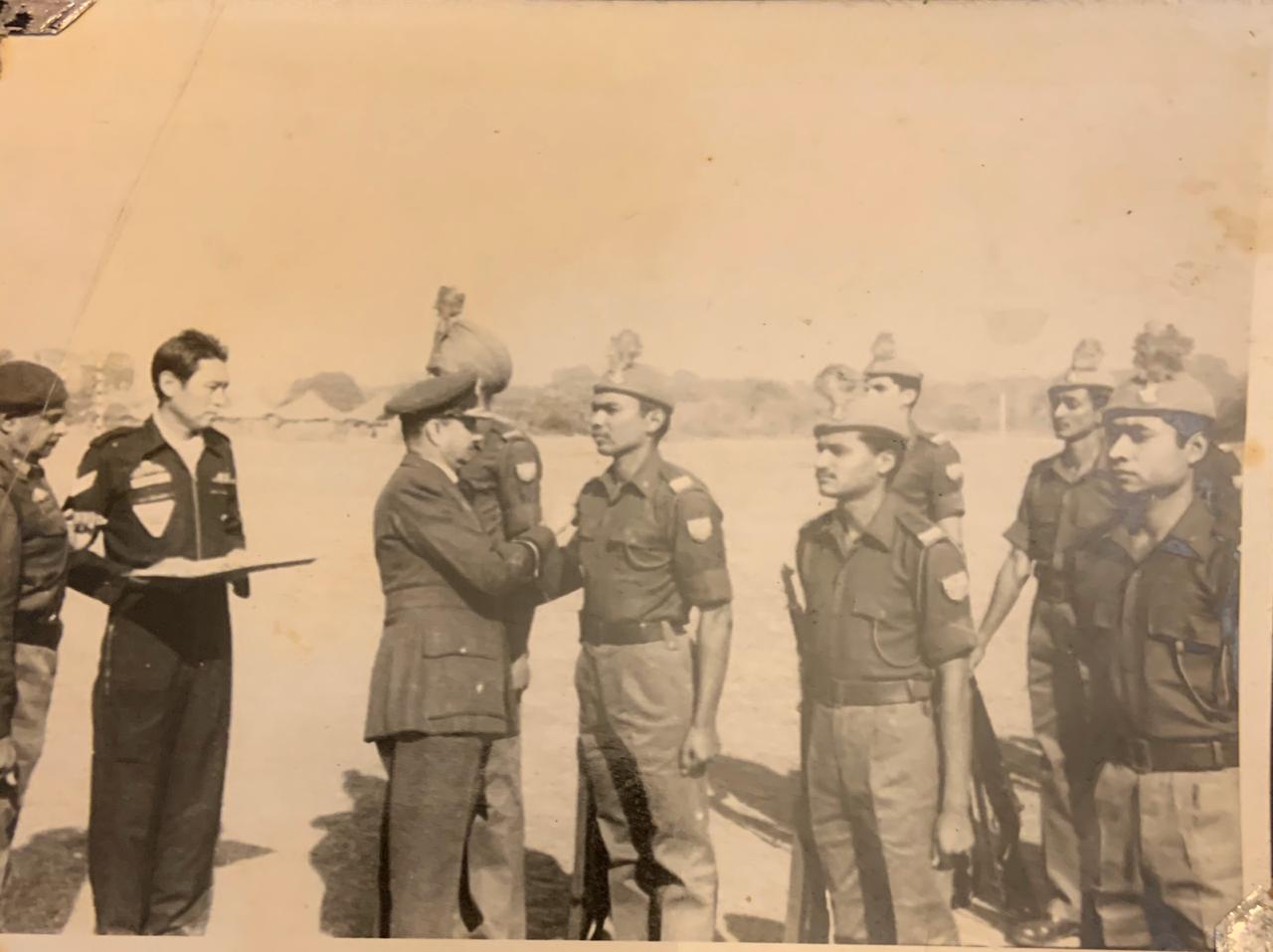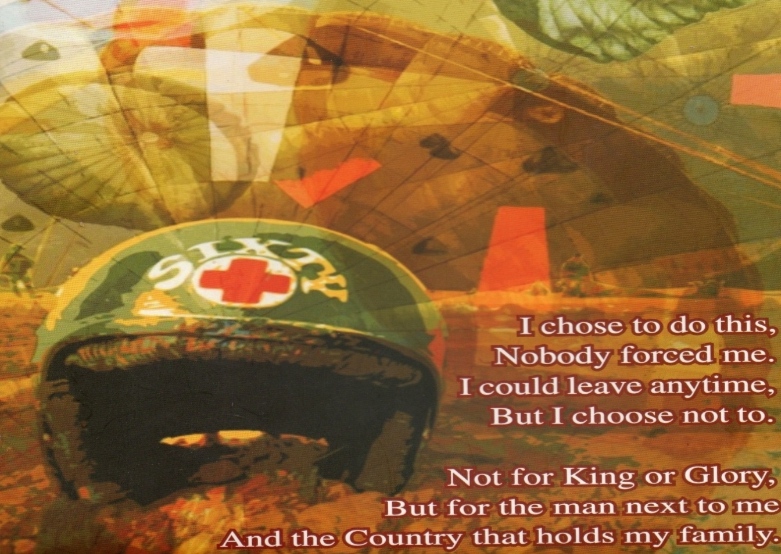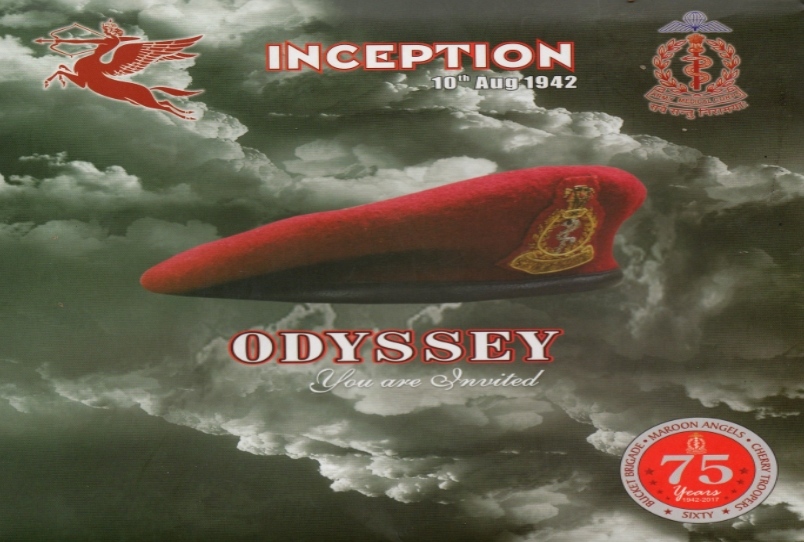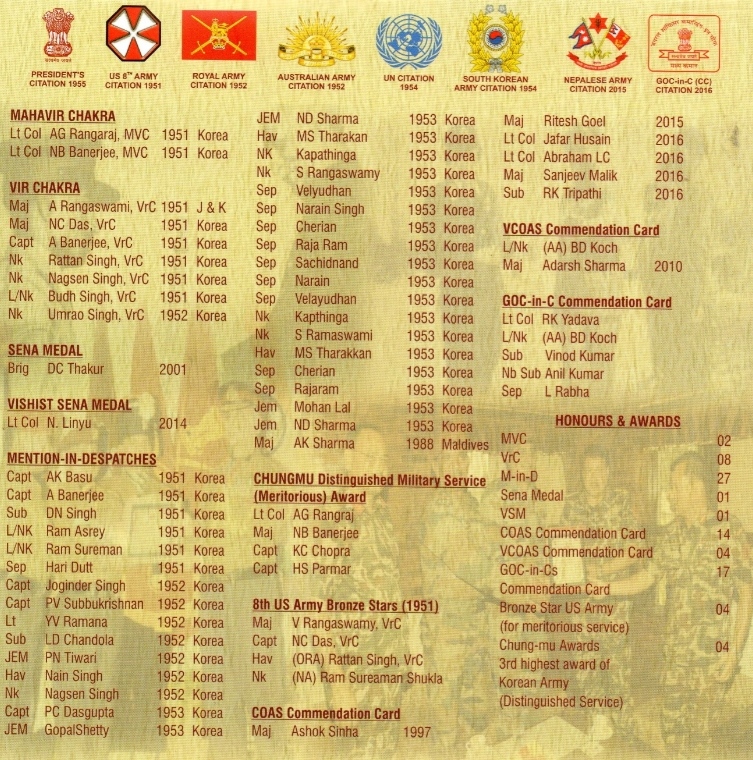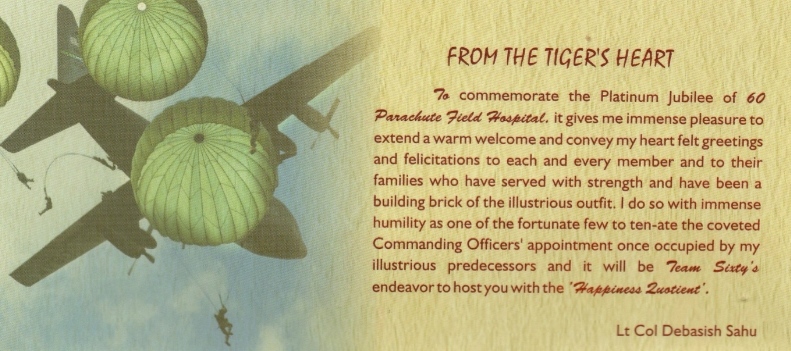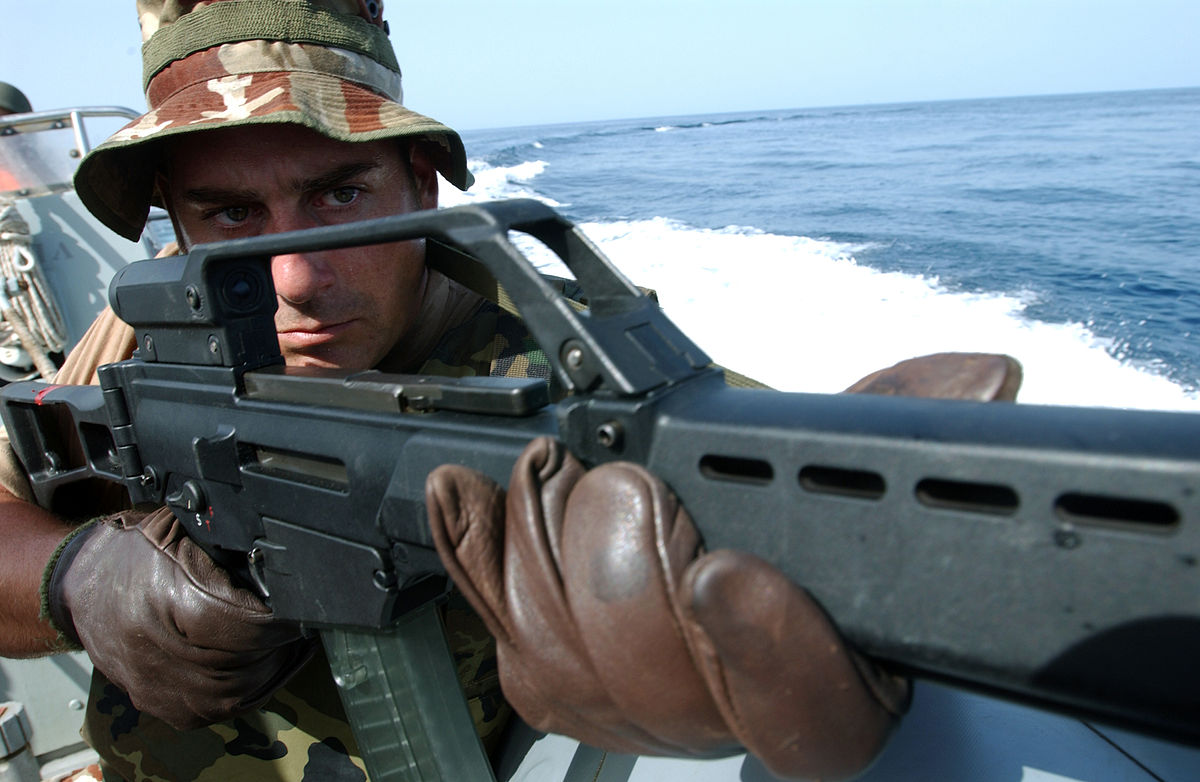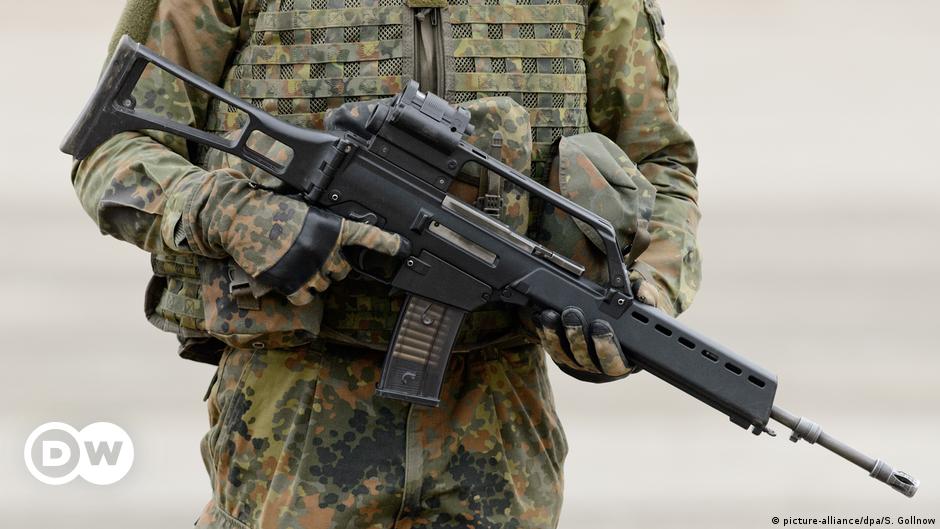These guys r nuts! And the last part abt the Gurkhas

www.indianpolitics.co.in
The Parachute Basic Course : To Earn The Qualification Wing You Better “ Paon Milao, Upar Dekho, Niche Jao “
By
Kurus -April 18, 2020
By Colonel Awadhesh Kumar, Special Forces
This story is dedicated to my dear friend Late Colonel Parsanna Bala Gole who had motivated me for the Para Course at IMA. While commanding his 9 JAT, he laid down his life , on the last of his Unit’s tenure on the LOC It is also dedicated to a score of my Course mates including Late Colonel R S Chauhan of 15 GUARDS and also to our instructors led by Deputy Leader Dawa . With them I had done my Parachute Basic Course at Sarsawa in December 1977 .
One way to do the Parachute Basic Course is what they have shown in some of the Hollywood World War Two movies ie you are made to put on the chute and at the door of the aircraft someone may tell you what to pull and when to pull, then out you go !!!
Well some thing like this was done by Captain Bose of 60 Parachute Field Ambulance, who just with one day of crash course on the ground went ahead to jump some where in the Arakans , Burma during WWII in 1942. As Capt Rangaraj (first Indian Paratrooper) and few other qualified paratrooper doctors were away on other duties , Capt Bose a newly arrived doctor volunteered for the task . He was sent to provide immediate medical help to a huge column of retreating civilians which included a large number of women and children . He did a wonderful job but alas himself died doing his duties and never returned . Today we do not even have his first name .
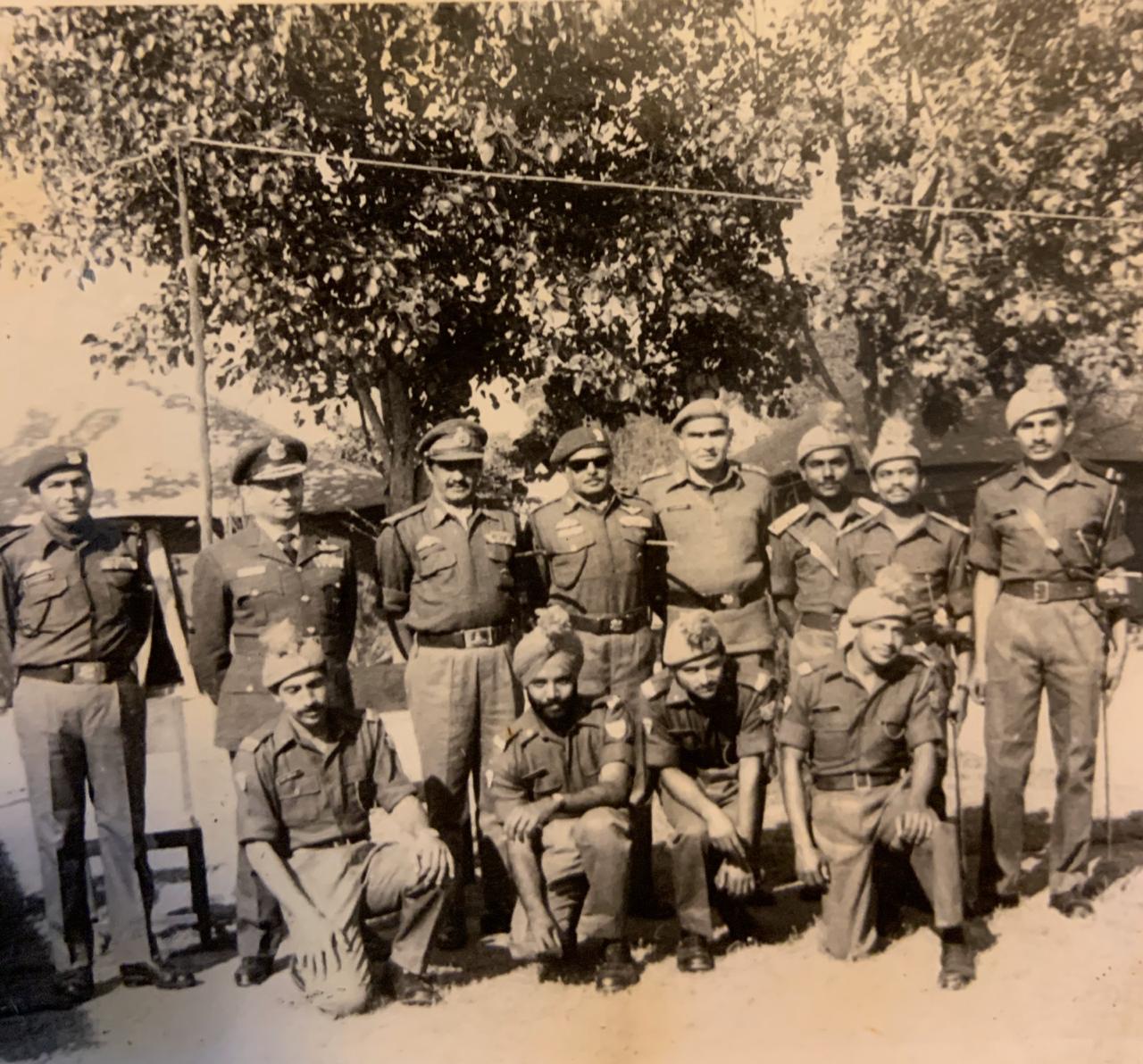
During the 1971 war , 2/ Lt LJS Gill of 2 PARA would not leave his Commanding Officer in peace , till he was permitted to jump at Tangail , near Dacca , with the rest of the unit . He refused to be part of the Land Tail that would eventually link up with the unit . The problem was that though he had completed the ground training part of the Basic Course , he was yet to do the first Jump . So his first Jump itself became a Combat Jump. However , Para Training School , IAF was not so an easy “ foe “ as General Niazi boys and therefore , Lt Gill had no option but to re do the course all over again , after the war .
During Tangail drop 784 paratroopers had jumped out but only 783 landed on the ground over next few minutes . To his utter surprise Naik Mahadeo Gurav , who was in the lead plane and at 19 th position , making his nineteenth Jump , found himself still hanging from the plane by a 15 ft nylon static line . As the plane speeded up post drop from 125 km/ h to 175 km /h , Gurav started swinging like a pendulum and hitting the aircraft underbelly . Apart from the parachute on his back , he had a reserve parachute on his chest , a sten carbine below his armpit ,FSMO below the reserve chute , and tied to his leg the weapon container with a 2″ mortar and eight bombs . The slip stream was not only buffeting him violently but had also started choking him badly . He remembered his little daughters for one last time and gave up hope but fortunately did not pass out .
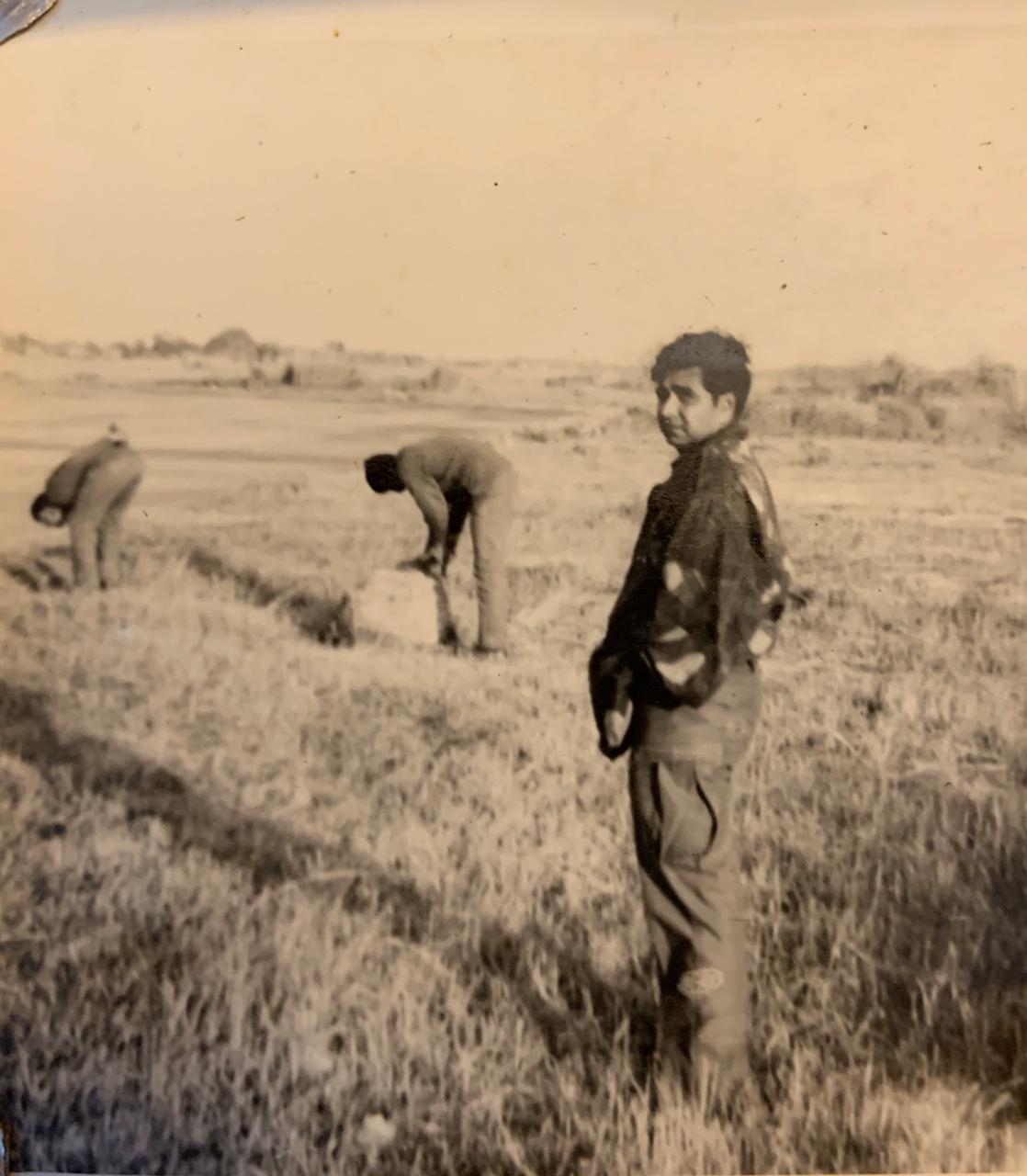
Unknown to him, two dispatchers in the aircraft were staking their life but still working on the “ procedure “ to give another life to Gurav . After 13 minutes of eternity and nearly 50 km from Tangail , suddenly Gurav was falling down again and then to his surprise he saw his chute opening up . He luckily landed near a village which had Muktibahni on one side and Razakars on the other . It took him a week to link up with 2 PARA . The then Adjutant of 2PARA Captain N K Sharma had become the first Indian to enter Dacca , when he had gone to deliver the Surrender Ultimatum from Manekshaw / J S Arora to Niazi . During our time at NDA , whenever Captain N K Sharma , Divisional Officer Golf Squadron , used to be the Battalion Duty Officer , a special “ Para Drop “ warning used to be sounded in all the Squadrons of No 2 Battalion . Today he is the Governor of a State .
Interestingly four of us course mates who had done Parachute Basic Course from IMA as part of adventure activities got commissioned directly into the Parachute Regiment . This had happened for the first time . Earlier those getting commissioned directly into the Parachute Regiment had not attended such Jumps from IMA ,though there were cases of such people joining the Paras later on from their parent regiments . R K Goraksha , Ivan Crasto (Kirti Chakra winner for Parwanoo Ropeway rescue ) and V N Prasad ( later Major General ) and of course the fifth one , G P Kale who joined the Paras from Madras Regiment could not escape the PTS , IAF net . They all had to do the Basic Course all over again .
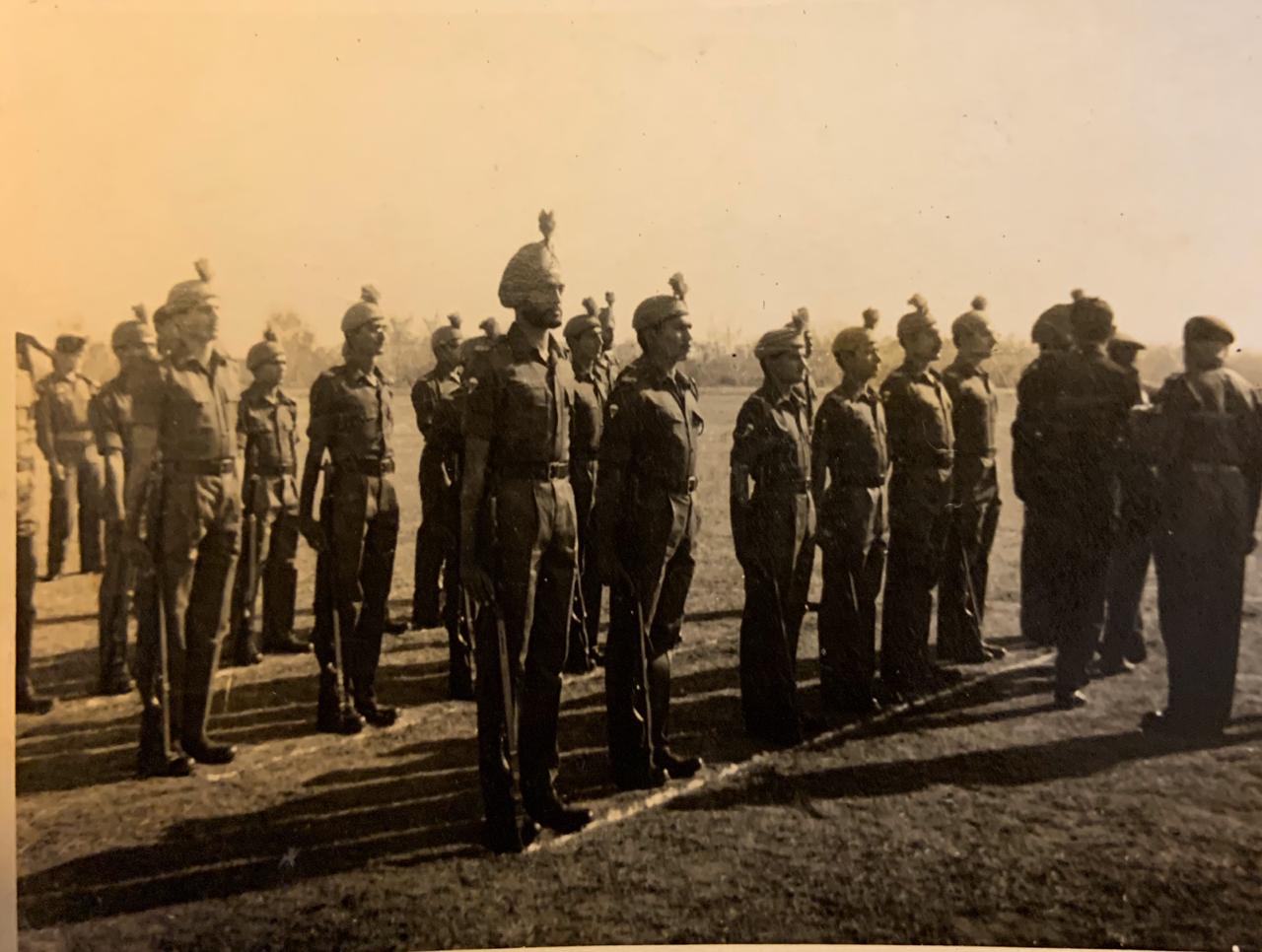
However somehow my name got missed out . Right after my probation , we had to move out into a high altitude area for hunting down a few suspected infiltrators. On coming back I was curtly informed by the Adjutant Captain Roshan Lal that Defence Accounts had accepted my IMA jumps and started paying the Parachute Pay with effect my commissioning date itself . Now I should stop dreaming of going to Agra on a vacation .Naturally why would the Commanding Officer and the Adjutant permit a 2/ Lt to vanish from the Unit located in field area and go to Agra for nearly a month . Therefore due to exigencies of Unit Service , I got the chance to go for refresher jumps to Agra only after a gap of 22 months from my first jump .
While the jumps from IMA at Sarsawa were done by us from MI8 helicopters , the jumps at Agra were to be from C-119 Packets , a totally different proposition by 1000% . Also having forgotten everything regarding wearing of parachute etc , I badly wanted to attend some ground training . However I had landed at Agra with Major K C Padha ( later Major General ) to attend the Para Regimental Reunion . So instead of a regular refresher course , I found that I would be jumping as part of reunion jumps .
To my “ horror” I also found out that like a true paratrooper , Major Padha had intense dislike for any ground training . So it was only next morning ( after a late night party ) that while wearing the chutes in the PTS hangar , right in front I saw written in bold letters “ IN PARACHUTING IGNORANCE IS NOT BLISS , IT IS DISASTOUR “ . The writing rattled me enough to tell my plight to two senior para commando captains from 10 Para SF ( I was a 2/Lt ) who were right in front of me in the Hangar Area , thinking that they will do something . Instead they just laughed and said “ just follow us and try and do what we do “ .
In the MI8 at Sarsawa , due to clerical error of my name being typed as Abdhesh , I had been made the number one jumper . In the bargain for the first jump , I had been standing at the open door for full five minutes , looking down at the meandering Yamuna down below had been cursing myself for volunteering and also cursing my dear friend P B Gole for dragging me into this mad adventure . He was from Golf Squadron but we had been in the same academic class in NDA and were in then the same Platoon of Sangro Company at IMA . Among other things , Gole, the short wiry Maratha had been a Super Gymnast and a PT blazer at NDA , where as I had barely managed to pass my hand spring tests . He was mad about joining the 9 PARA SF , where as I just wanted to opt for infantry . In fact it was Gole who had written PARA in my Option Form above my “ ASSAM REGIMENT “ and qualified it further with 10 PARA SF as he had himself volunteered for 9 SF . On commissioning I was allotted 9 PARA SF and 2 ASSAM . Parsanna Gole who had nearly resigned his commission when he was not allotted 9 PARA SF , later laid down his life on the LOC while Commanding his 9 JAT . However as CO , he did motivate a young officer of his Unit to come and join 9 SF .
In the MI8 standing at the door and then stepping out is like jumping into the Swimming Pool from the 10mtr diving board . There is no slip stream and you can actually hear and see your chute opening . Here in C119 I was standing at position number 19 on the port side my eyes now fixed on Captain Jassani and not knowing what to do . Then when GREEN ON GO happened , every thing was a blur and before I knew , running after Capt Jassani even forgot to do what he was doing and I was out of the door . Though getting hit by a 125 km slip stream . I still remember seeing the air craft fly away “ below me “ and wondering how it reached there ( because of the slip stream I had gone into a summersault and had viewed aircraft between the legs with changed sense of UP and DOWN ) when suddenly there was a big jerk and all I could say was “ Thank God “ after my chute opened .
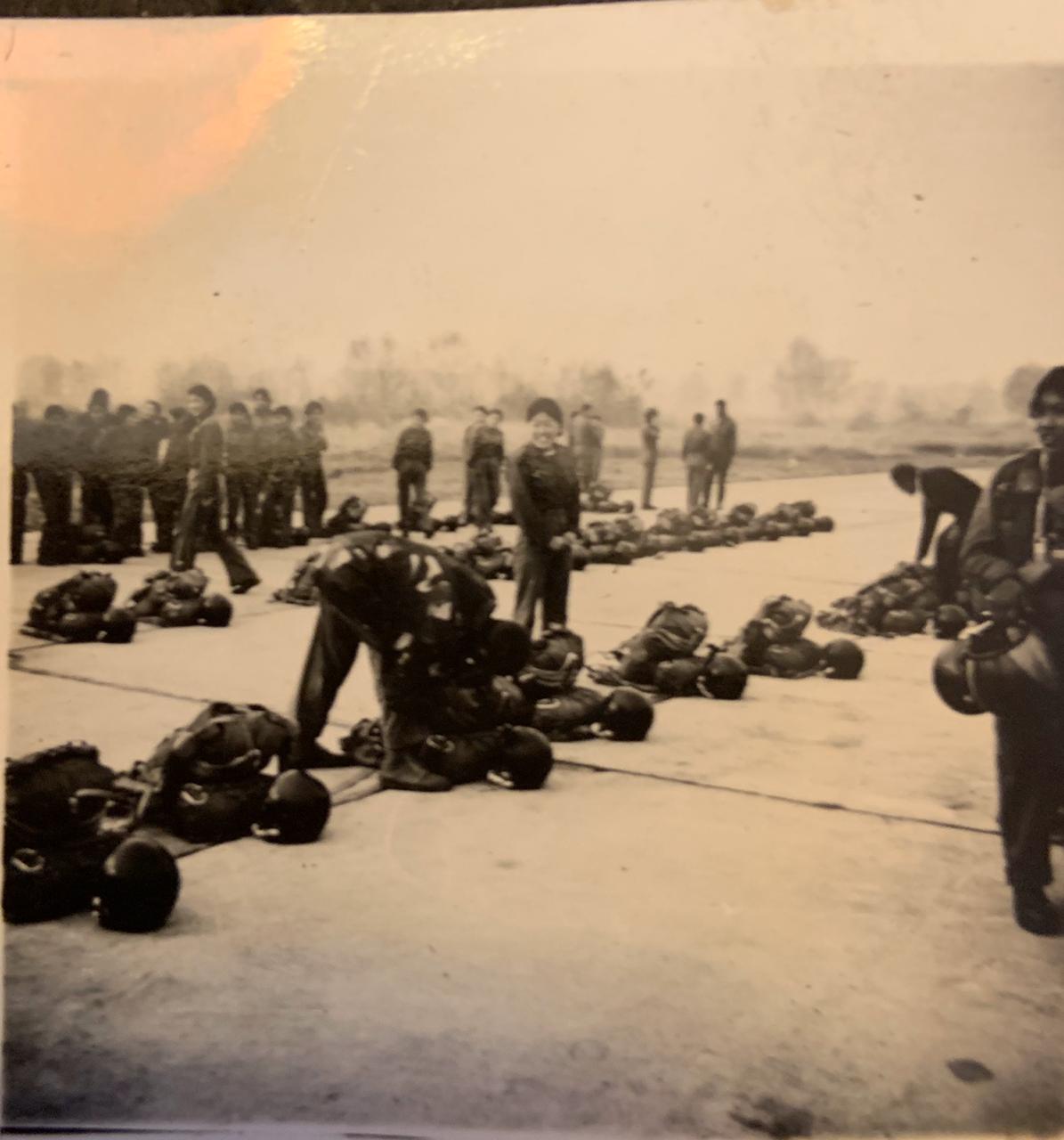
Later on when posted at the Military Training Directorate General at Army HQ ,where I was looking after all the training matters related to airborne and Heliborne training and had virtually become the single point contact with Air HQ , even for many other things unconnected , technically speaking I was not “ qualified “ on Parachute Basic Course .
No two parachute jumps are alike , each is a new experience . The same reasoning’s seems to apply to the question that what attracts men to Para trooping …men apart every man an emperor . Once he takes the leap , into the unknown darkness ( night operations / unknown area ) he may land in water , a roof , hit a tree or a high tension wire , on boulders or when lucky on total soft ground . In any case he hits the ground with force equivalent to a jump from 15 feet . Add to it the force of of his own weight and the weight of equipment being carried …..upto 40kg + and the Wind Speed at times up to 20 ft / second . He must then join up with his comrades as quickly as possible in dark in that unfamiliar surroundings , out wit the enemy and always shoot to kill .
In the Tangail operational drop , apart from a hang-up case , one Dakota dropped I xJCO and 19x Other Ranks about 18km away from the designated drop zone and very close to an enemy held defensive position . They were written of as battle casualties by the unit . However they fought their way out and reached Tangail a day later .
Strict training and modern equipment have made things safe but still in Para trooping (distinct from parachuting for sports ) broken ankles , fractured spines , wrenched necks , riser burns and concussions are normal accepted daily hazards and at times a HANG UP or even the dreaded ROMAN CANDLE .

38 years after the “ hang up “ case of Mahadeo Gurav , in 2008 when he visited Agra for a 2 PARA reunion for Tangail , he was invited specially to PARA HOLDING WING , Army Airborne Training School, the Mecca of Indian Paratroopers , by all us officers posted there to felicitate him . Then a few weeks later a similar HANG UP case happened again ( second time in Regimental history ) at Malpura DZ of Agra . This time it was a young paratrooper undergoing his fourth basic jump from an AN32 aircraft . Again the PTS , dispatchers were successful and the youngster not only landed safely but went on to do the night jump same evening and completed his course . Next morning I sent an OP IMMEDIATE incident report to Military Operations Directorate . It was put up to COAS and he at once awarded COAS Commendation Cards to not only the young paratrooper but also to the two despatchers Junior Warrant Officers of the Para Training School , IAF , Agra .
On October 1941 when first experimental jumps were made by RAF Flight Lt Brereton and Army Capt Abbot and Capt Hopkinson , all had severe injuries , as due to pilots error all three landed bang on the concrete runway of the air base near Karachi . Later on when the Parachute Training School was started at Chaklala , initially the fatal casualty rate used to be 1% per course , quite stressful for a course comprising 60 personnel with a duration of 14 days , other injuries being incidental . It took time for the fatality rate to come down . Though it happens today also , once in a blue moon , due sheer negligence or sheer bad luck .
Better packing techniques and procedures and a well laid down maintenance procedures also reduced the incidental injuries during training . More than 60 years later , incidental injuries had again increased phenomenally and there was one fatality also . Using the statistics , I was able to convince the DGMT and the VCOAS for the authorization of a MI room with a Nursing Assistant to the AATS . Then I got posted to Army Airborne Training School . Thanks to Lt Colonel G S Dhillon, also posted there , Lo and behold , the application of same 1940s Chaklala procedures , reduced the injuries rate considerably .
On daily basis , Indian Army likes to do such things in a saner manner and not the way I did my first refresher . So we have a Parachute Holding Wing as part of Army Airborne Training School( AATS) at Agra for managing para training . There are 12 Para Basic Courses , one per month , every year. In addition there are generally one Basic Course for the NCC Cadets and may be( not a regular thing) upto two such courses for NDA Cadets / IMA GCs . Then there are 52 Refresher Courses every year .
Vacancies are allotted by AATS directly to Parachute Regimental Centre / Para SF units / Para units / Affiliated other Arms and Services Units of Parachute Brigade / Presidents Body Guard and MARCOS based on projected requirements . To become eligible a recruit should have finally been attested as a trooper at the Para Centre and for others, should have been selected after their probation.
The actual training as such is imparted by the Parachute Training School run by the IAF , also located in Agra . Roughly it is a three weeks package . First part is the Ground Training which becomes tougher gradually, at the end of which you have to clear a few tests . Next is the air experience . Third part comprises the actual jumps ….three day jumps , one day jump with equipment and weapons and finally one night jump. Care is taken to see that wind speed , visibility etc are within the laid down peace time safety limits and jump height is kept minimum 1200ft . In actual combat/ even excercises , wind speed etc will have higher limits , visibility limits further reduced and even the height will be much lower .
Things were not that easy when combat paratrooping had started in India in 1941. The Paratraining School at Chaklala had all instructors from RAF , a few Officers and NCOs all British . The language of the British NCOs was difficult to follow even by the educated Indians . Whereas the vast majority of trainees coming from all parts of the Sub Continent were as different from each other as Swedish from the Greeks and at the most semi literate . However a very high standard was achieved in spite of every thing …..climate , language , food , accommodation , equipment .
The song “ CHAKLALA CHINDITS” , written by Squadron Leader R T D Smith , one of the jump Instructors ( 1943 to 1947 ) highlights the then prevailing atmosphere :
Oh , We have bolo ‘ ed , Paown Milao
Upar Dekho , Niche Jao
And we have done , our spot of sweatin on the square
We have trained every bloomin mob
And we have cursed the ruddy job
But we wouldn’t swap it if the chance was there
Oh we have bolo ‘ d zinderbad
Ki Jai and sat siri Akal
And Nara Mara Haidri plus the rest
But of all the troops we have had
Though none of em were bad
Chota Johny Gurkha was the best
So keep your paown milao
when you start to niche jao
And always treat your chute with care .
We have trained every bloomin mob
And we have cursed the ruddy job
But we would’nt swap it , if the chance was there.
The article cannot be completed unless the story of the Gurkhas is included . When it was decided to raise a parachute battalion for the British Indian Army , initially there were hardly any volunteers . So a motivational team went around to give lectures and demonstrations .
In one of the Gorkha Unit after the lecture there were no volunteers . Red faced , both the Commanding Officer and the Subedar Major got up and talked to the men . Finally a dozen or so volunteered . Meanwhile the motivational team’s truck carrying the parachute arrived and with its help things were explained once again . This time a large number of the men were ready to volunteer.
When the British CO asked them in chaste Gurkhali as to why they had had not volunteered earlier, they replied that they thought that they were being asked to jump from the plane without this umbrella like device !! The Motivational Team from British Army kept wondering about the dozen or so Gurkhas who had volunteered after the initial lecture .
In another Gurkha unit , during the motivational lecture , due to a mix up , instead of airborne training movie , the troops were shown a movie on Anti Airborne Operations . There were hundreds of volunteers as everyone enjoyed it thoroughly and thought that it was big fun activity in spite of the commentary “ if you do your job well , there is no reason why 95 of the men coming down should ever reach the ground alive “.
Then at Chaklala, one day a Valencias aircraft loaded with Gurkhas for “ air experience” crashed right after take off . Fortunately no one was hurt and all the Gurkhas ( all were first timers to sit in an aircraft) just deplaned , marched back smartly down the runway and emplaned another aircraft . They all apparently thought of entire thing as a routine drill .


